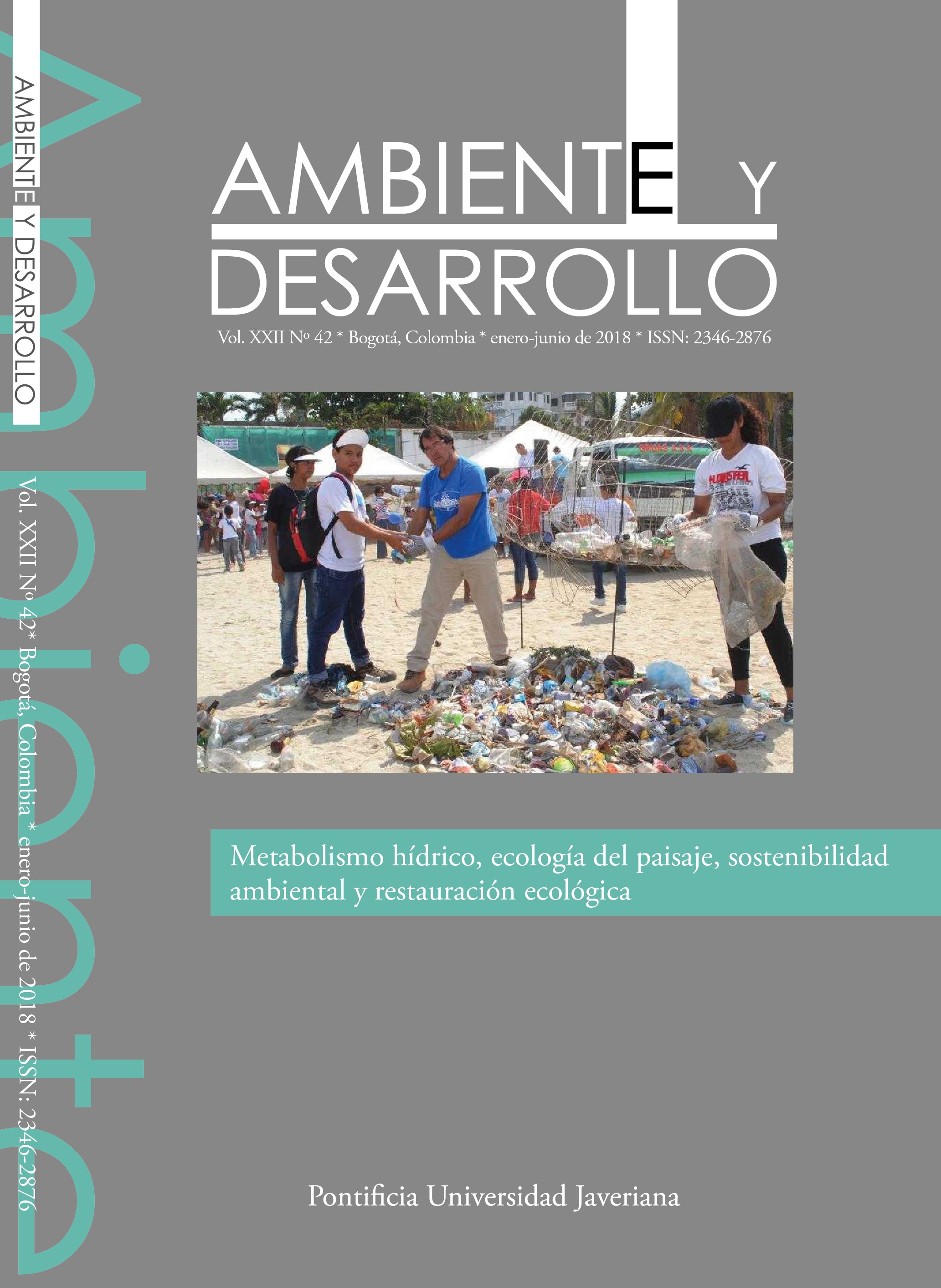Resumen
Esta investigación propone un modelo metodológico de restauración ecológica como una estrategia de construcción social, en la vereda Chipautá, Guaduas. Se definieron cuatro etapas, en la primera se obtuvieron las bases teóricas necesarias para la construcción del modelo, en la segunda se recolectaron datos en campo mediante las técnicas cartografía social, entrevistas semiestructuradas, identificación de problemas y reunión con grupos sociales, y se realizó una revisión sistemática de bibliografía de experiencias de restauración ecológica con enfoque social, la cual permitió obtener elementos estructurantes que aportaron al modelo. En la tercera etapa se interpretaron los resultados y se validaron mediante triangulación de datos. Finalmente, se presentó el modelo metodológico. Con el modelo propuesto, se logró contribuir al campo de conocimiento en restauración ecológica, planteando un nuevo marco de análisis que permita recuperar los ecosistemas degradados y proponer alternativas de desarrollo sustentable y de manejo adaptativo ante los cambios ambientales actuales en las comunidades involucradas.
Cantillo, E., Lozada, A., y Pinzón, J. (2009). Caracterización sucesional para la restauración de la reserva forestal Cárpatos, Guasca, Cundinamarca. Colombia Forestal, 12, 103-118.
Barrera-Cataño, J., Contreras-Rodríguez, S., Garzón-Yepes, N., y Moreno-Cárdenas, A. (2010). Manual de restauración ecológica de los ecosistemas disturbados del Distrito Capital. Bogotá: Secretaría Distrital de Ambiente y Pontificia Universidad Javeriana.
Clewell, A., Rieger, J., y Munro, J. (06 de 2000). Guidelines for Developing and Managing Ecological Restoration Projects. Society for Ecological Restoration (SER). Recuperado de http://www.iucnsscrsg.org/STORAGE/RSG%20CD/PDFs/SERGuide.pdf
Egan, D. (2003). Ecological Restoration and Sustainable Development. Ecological Restoration, 21(3), 161-162.
Gann, G., y Lamb, D. (2006). La restauración ecológica – un medio para conservar la biodiversidad y mantener los medios de vida. Recuperado de http://www1.inecol.edu.mx/repara/download/III_1_RestauracionEcologica_GannAndLamb2006.pdf
Gomá, R. (2008). La acción comunitaria: transformación social y construcción de ciudadanía. Revista de educación social, 7. Recuperado de http://www.eduso.net/res/?b=10&c=90&n=251
Ministerio de Agricultura y Desarrollo Rural (MADR). (2003). Informe Final Proyecto Piloto de Zonas de Reserva Campesina: hacia una estrategia de la frontera de estabilización de la frontera agrícola con desarrollo humano. Bogotá: IICA Biblioteca Venezuela.
Hallett, L., Hobbs, R., y Mooney, H. (2011). Intervention Ecology: Applying Ecological Science in the Twenty-first Century. BioScience, 61(6), 442-450.
Hernández, S., Fernández, C., y Baptista, P. (2004). Metodología de la investigación. México: McGraw-Hill.
Keenleyside, K., N. Dudley, S. C., Hall, C., y Stolton, S. (2014). Restauración Ecológica para Áreas Protegidas: Principios, directrices y buenas prácticas. Gland, Suiza: UICN.
Lozano, F. (Ed.). (2008). Herramientas de manejo para la conservación de la biodiversidad en paisajes rurales. Bogotá: Instituto de Investigación de Recursos Biológicos Alexander von Humboldt.
Organización Internacional de las Maderas Tropicales (OIMT). (2002). Directrices de la OIMT para la restauración, ordenación y rehabilitación de bosques tropicales secundarios y degradados. Recuperado de http://www.itto.int/direct/topics/topics_pdf_download/topics_id=1540000&no=3&disp=inline
Parques Nacionales Naturales de Colombia (PNN). (2009). Recuperado el 23 de 04 de 2015, de http://www.parquesnacionales.gov.co/PNN/portel/libreria/pdf/AREAS_PROTEGIDAS_PAIS_2009_REPORTADAS_PNN.pdf
Román, F., Levy, S., Aguirre, J., y Sánchez, A. (2011). Arboles de la selva Lacandona útiles para la Restauración Ecológica. México D.F.: Comisión Nacional Forestal.
Ritchlin, J. (2001). Healing the Land… Healing Ourselves: A Guide to Ecological Resources for British Columbia. Vancouver, BC: BC Environmental Network Educational.
Skjong, R., y Wentworth, B. (2001). Expert Judgment and Risk Perception. Proceedings of the Eleventh (2001) International Offshore and Polar Engineering Conference. Norway: The International Society of Offshore and Polar Engineers
Subirats, J. (2010). Los grandes procesos de cambio y transformación social. Recuperado de https://ddd.uab.cat/pub/caplli/2010/119513/camsoccoosig_a2010p8.pdf
Ambiente y Desarrollo se encuentra registrada bajo la licencia Creative Commons Reconocimiento 4.0 Internacional. Por lo tanto, esta obra se puede reproducir, distribuir y comunicar públicamente en formato digital, siempre que se reconozca el nombre de los autores y a la Pontificia Universidad Javeriana. Se permite citar, adaptar, transformar, autoarchivar, republicar y crear a partir del material, para cualquier finalidad (incluso comercial), siempre que se reconozca adecuadamente la autoría, se proporcione un enlace a la obra original y se indique si se han realizado cambios. La Pontificia Universidad Javeriana no retiene los derechos sobre las obras publicadas y los contenidos son responsabilidad exclusiva de los autores, quienes conservan sus derechos morales, intelectuales, de privacidad y publicidad.
El aval sobre la intervención de la obra (revisión, corrección de estilo, traducción, diagramación) y su posterior divulgación se otorga mediante una licencia de uso y no a través de una cesión de derechos, lo que representa que la revista y la Pontificia Universidad Javeriana se eximen de cualquier responsabilidad que se pueda derivar de una mala práctica ética por parte de los autores. En consecuencia de la protección brindada por la licencia de uso, la revista no se encuentra en la obligación de publicar retractaciones o modificar la información ya publicada, a no ser que la errata surja del proceso de gestión editorial. La publicación de contenidos en esta revista no representa regalías para los contribuyentes.



